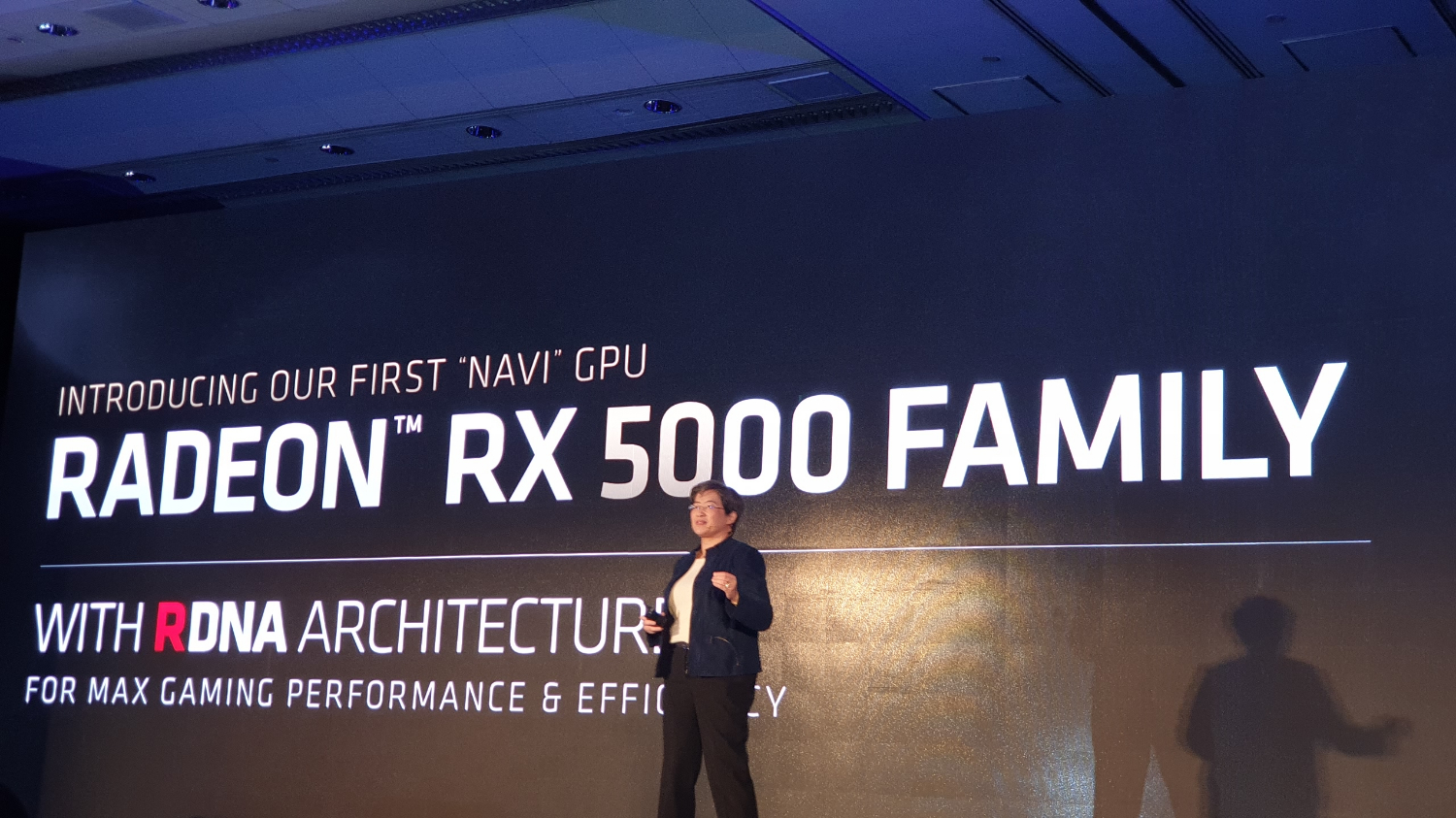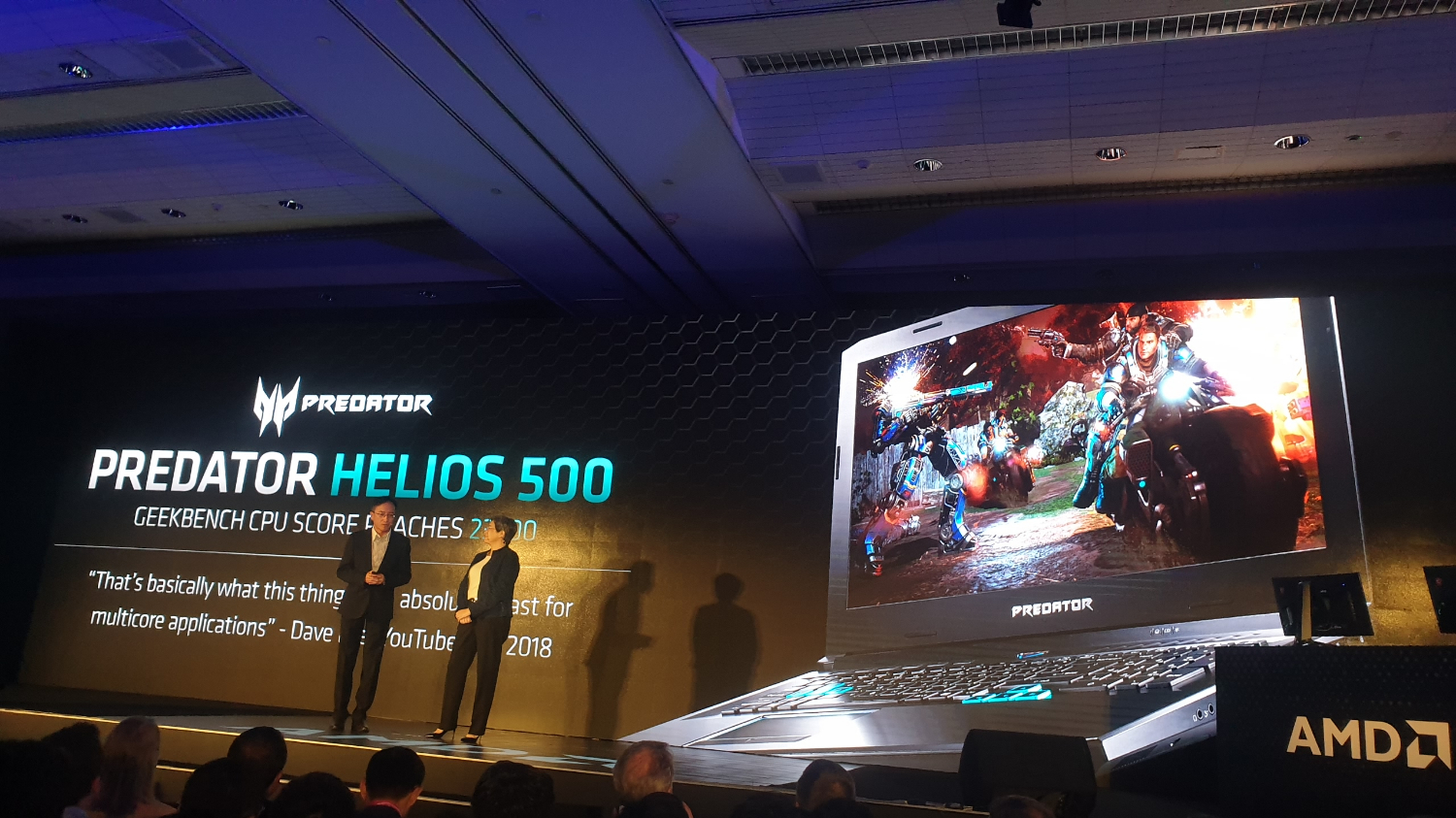AMD Computex 2019 Keynote Live Coverage
UPDATE: We've published our full analysis of the Third Gen Ryzen processors here, and our analysis of the Navi announcement here.
We're here at the International Press Conference CEO keynote to cover AMD CEO Lisa Su's first Computex Keynote. We're hoping to hear plenty of updates on AMD's portfolio of upcoming 7nm products, including third-gen Ryzen chips, the Navi graphics cards, and perhaps even an update on the EPYC Rome data center processors. All of these products are due in Q3 of this year, making it likely that we will hear updates.
The new 7nm process hands AMD the process lead over Intel for the first time in its history, and also gives it the node advantage over Nvidia's graphics cards. A smaller manufacturing process doesn't mean guarantee success though, so AMD has its new Zen 2 microarchitecture in the works to boost performance for the Ryzen and EPYC processors, and the Navi architecture to beef up its arsenal of graphics cards. If the past is any indication, we can expect some performance demos during the keynote, too.
The keynote has begun. Stand by for updates.
Walter M. S. Yeh, the President of the International Press Conference, came on stage to introduce AMD CEO Lisa Su for her first Computex keynote, which comes during AMD's 50th Anniversary.
AMD President and CEO Dr. Lisa Su took the stage and thanked the Computex committees for inviting the company to its first keynote at the show. Su outlined the history of AMD over the last 50 years as it has introduced new technologies, touting accomplishments like the first 1GHz CPU and GPU, the first 32-core high end desktop processor, and the first 7nm GPU.
AMD isn't resting on its laurels, though, as it strives to help process the crushing load of data from new types of workloads. AMD's one goal is to lead the industry, which has led it to push the envelope of high-performance computing. Su says that requires making big bets around high performance leadership through a series of decisions made three to five years ago to move forward on process technology with TSMC, saying "We are extremely proud to partner with TSMC because they really do have the best technology in the industry.” AMD also made big bets in high-performance cores and the company's chiplet architecture.
Get Tom's Hardware's best news and in-depth reviews, straight to your inbox.
Su said the company will cover its EPYC Rome processors, Navi graphics cards, and Ryzen processors here at the keynote, beginning with the data center products. AMD introduced EPYC processors two years ago, and now there are 60 EPYC-based platforms and 50 cloud-based deployments with some of the leaders of the industry.
Su also touted the company's recent announcement that it's next-gen EPYC and Radeon Instinct were chosen to power Frontier, the world's fastest supercomputer at 1.5 exaflops of compute power.
AMDS announced that Microsoft's Azure cloud had chosen to adopt its CPUs, with clusters up to 10,000 EPYC CPUs in a cluster. One customer reported a 7,500x performance improvement using the new cluster.
AMD's EPYC Rome offers 2X the performance per socket over the previous-gen EPYC models, and 4X the performance in floating point workloads. AMD demoed two AMD EPYC Rome processors in a dual-socket server that outperformed Intel's flagship Cascade Lake Xeon 8280's by a factor of two during a protein folding application. The EPYC Rome processors will launch next quarter.
Su said AMD loves gamers and switched gears to gaming products. Su recounted the launch of the Radeon VII, the industry's first 7nm GPU. Su says the face of gaming is changing as it becomes a more socially interactive pursuit, with control and performance, among other aspects, playing an important role.
AMD built Navi to "power the future of gaming." Sony's next-gen Playstation will be powered by a custom Zen 2 processor and Navi GPU.
Navi comes with an all new 7nm RDNA architecture, which is different from the GCN (Graphics Core Next) architecture. Navi comes with faster clock speeds, lower power, and the world's first PCIe 4.0 GPU.
AMD's move to the Navi architecture doesn't mean it is entirely abandoning the GCN architecture for good. The company will continue to use the older architecture, but the new RDNA architecture is a clean-sheet design to power "the next decade" of gaming.
RDNA includes a new compute unit (CU) design optimized for efficiency and instruction per clock throughput, an all new cache hierarchy to provide higher bandwidth and lower power, along with a streamlined graphics pipeline to optimize for performance-per-clock and high clock speeds.
RDNA delivers a 1.25X performance per clock advantage over the previous generation. That, combined with the new processor and other advancements, RDNA gains 1.5X performance per watt. Su introduced the Radeon RX5000 family, with the "50" signifying the 50th anniversary of AMD. Su held up the first Navi GPU for the crowd.
AMD showed a real time demo of an Nvidia RTX 2070 going head-to-head with the Radeon RX 5000 series GPU in Strange Brigade, with the RX5000 offering 10% more performance.
Navi will launch with global availability in July. AMD will introduce price points, models, and other details about the Navi graphics card on June 10, 2019 3pm PT during an E3 livestream broadcast.
Su moved on to the desktop PC, which AMD sees as powered by three types of users: consumers, enthusiasts, and creators, with each needing tailored solutions for their uses. Addressing those needs requires strong partners, like AMD's partnership with Microsoft.
Su welcomed Roanne Sones, the CVP of OS platforms at Microsoft, to the stage. Roanne says that Ryzen is being adopted by many of the leaders in the industry, like Acer, Dell, HP, and Lenovo, and was one of the first partners to deliver drivers for Windows 10. Roanne said that Ryzen will be in 50% of modern devices this year, which is an incredibly bullish outlook from Microsoft.
AMD introduced a few of the designs that include second-gen Ryzen Mobile processors, with many of those designs being on display here at Computex.
Su invited Joe Hsieh, the COO of ASUS, to talk about some of the ROG laptops, motherboards, and gaming desktops powered by Ryzen. Hsieh introduced a new ROG Strix GL10DH desktop PC that will come with the third-gen Ryzen processors under the hood.
ASUS also announced its lineup of X570 motherboards, with 30 new designs coming to market.
Su invited Jerry Kao, the Co-CEO of Acer to stage. Kao said AMD stands for Astonishing Miracle Delivery, and the company's new Predator Helios 500 is one of Su's astonishing deliveries. This new laptop delivered a peak Geekbench score of 23200.
Jerry Kao of Acer came on stage. He introduced the company's Predator Nitro family of laptops and Casual Nitro desktops. Acer also offers laptops and Chromebooks with AMD's Ryzen processors. The Predator and Nitro will come with the third-gen Ryzen processors and Navi graphics cards.
Su played a video teasing the new third-gen Ryzen processors. AMD's official branding appears to come as either third-gen or 3rd Gen Ryzen. Su recapped what we already know - that the new chips come with 7nm Zen 2 cores that are the third incarnation of the Zen architecture. The chips drop into the AM4 socket and bring the first PCIe 4.0 connectivity to the desktop PC.
Third-gen Ryzen doubles the floating point performance and comes with twice the cache size. AMD said that it has boosted the instructions per cycle (IPC) throughput by 15% in desktop PC workloads. The improved IPC will improve performance in all types of workloads, from gaming to threaded applications.
Su introduced the Ryzen 7 3700X. This 8C/16T CPU comes with a 4.4 GHz boost and 3.6 GHz base frequency, 36MB of total cache, and a 65W TDP.
AMD conducted a demo of the new Cinebench R20 benchmark with the Ryzen 3700X vs. the Core i7-9700K, with the 3700X winning by 30%. Against the 9700K, the 3700X is 1% ahead in single-threaded performance, 28% ahead in multi-threaded performance, and at a 35W lower TDP.
AMD introduced the Ryzen 7 3800X, an 105W 8C/16T processor with a 3.9 GHz base and 4.5 GHz boost. AMD provided gaming benchmarks conducted at 1920x1080 that show a huge jump that ranges from 14% to 34% over the previous-gen Ryzen 7 2700X.
AMD demoed the world's first PCIe Gen 4.0 system running a PCMark benchmark that measures PCIe performance, delivering a 69% performance improvement over PCIe Gen 3.
Su presented benchmarks showing the 3700X and 3800X slightly exceeding the Intel competition in single-threaded applications, delivering big speedups in multi-threaded applications, and doing it all with lower power consumption.
AMD has 56 X570 launch motherboards, and over 100 previous-gen motherboards already in the ecosystem.
Su has one more thing for us: the new Ryzen 9 family that comes with more than eight cores on the mainstream desktop. This chip houses a second core chiplet, which enables AMD to bring Ryzen 9 to the market.
The Ryzen 9 3900X comes with 12 cores 24 threads, a 4.6 GHz boost, 3.8 Ghz base, 70MB of cache, and a 105W TDP.
AMD put the Core i9-9920X, a $1,200 12C/12T processor, against the Ryzen 9 3900X, with AMD winning by 18%. AMD's processor pulled this feat off at 105W compared to Intel's 165W.
Su revealed that the Ryzen 7 3700X for $329, the Ryzen 7 3800X for $399, and Ryzen 9 3900X for $49, which is half the price of Intel's competing processor, but AMD says it offers the same performance.
Su recapped the improvement over the last two years: up 32% in single threaded, doubled performance in multi-threaded workloads, and an increase from 8 cores to 12 cores on the mainstream desktop.
The full third-gen Ryzen lineup comes to market on 7/7/2019.
Breaking news....more coming.

Paul Alcorn is the Editor-in-Chief for Tom's Hardware US. He also writes news and reviews on CPUs, storage, and enterprise hardware.
-
mitch074 During that time, at Intel's, crickets are chirping (and probably some heads falling).Reply

























